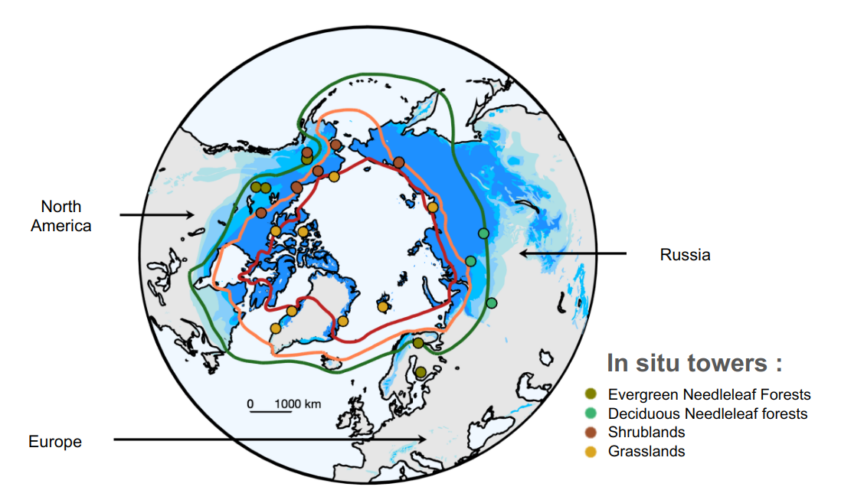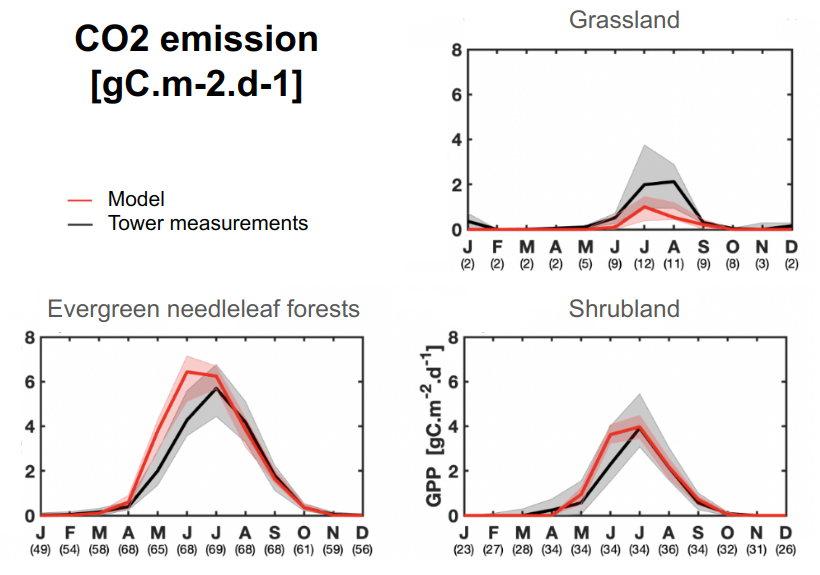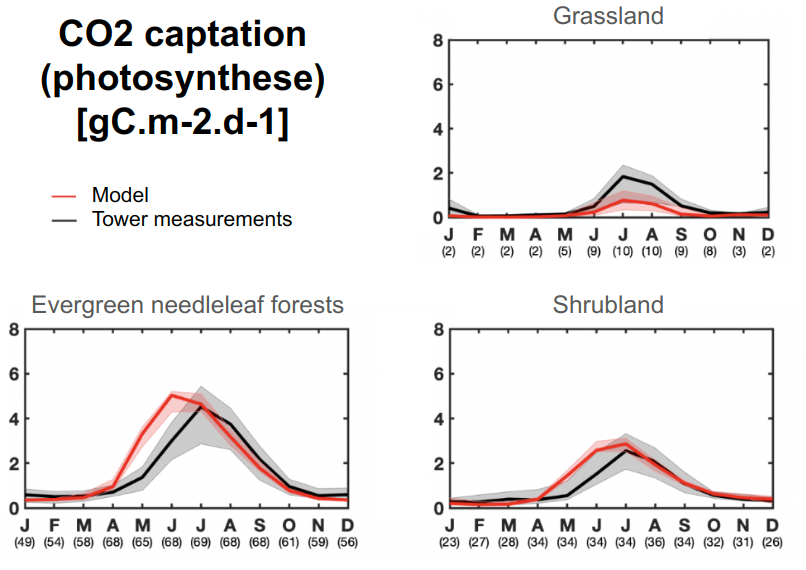
How will rising temperatures impact carbon fluxes in Arctic and Subarctic regions ? These areas hold large reserves of soil organic carbon. Increased CO2 emissions are likely to occur, but the extended growing season allows plants to capture more of it, and much remains unknown about how these changes might disrupt the global climate system.
A new study has been published on the carbon product developed within the framework of the SMAP mission. The latter provides CO2 flux estimates between the Earth’s surface and the atmosphere, obtained from a light-use-efficiency model and satellite data. The study conducted by R. Madelon compared these estimates with ground measurements from eddy covariance towers between 2015 and 2022.
The findings reveal that the model overestimates CO2 releases and uptakes through photosynthesis at the start of the growing season in taiga (needleleaf forests) and shrub tundra (shrublands). Conversely, these processes are underestimated in prostrate shrub tundra (grasslands) leading to uncertainties regarding the classification of Arctic and Subarctic ecosystems as CO2 sources or sinks.
Comparaison of CO2 emission and captation (through photosynthesis) between in-situ measurements (eddy covariance towers) and SMAP carbon product for different landcovers
Moreover, although the model uses the SMAP’s soil moisture measurements, they turn out to have little influence on the calculated fluxes, as if Arctic and Subarctic ecosystems are not subject to hydric stress. This contradicts theoretical expectations and several field-based studies, highlighting the need for a better understanding of how soil moisture drives CO2 fluxes.
More information on the newly published article !


